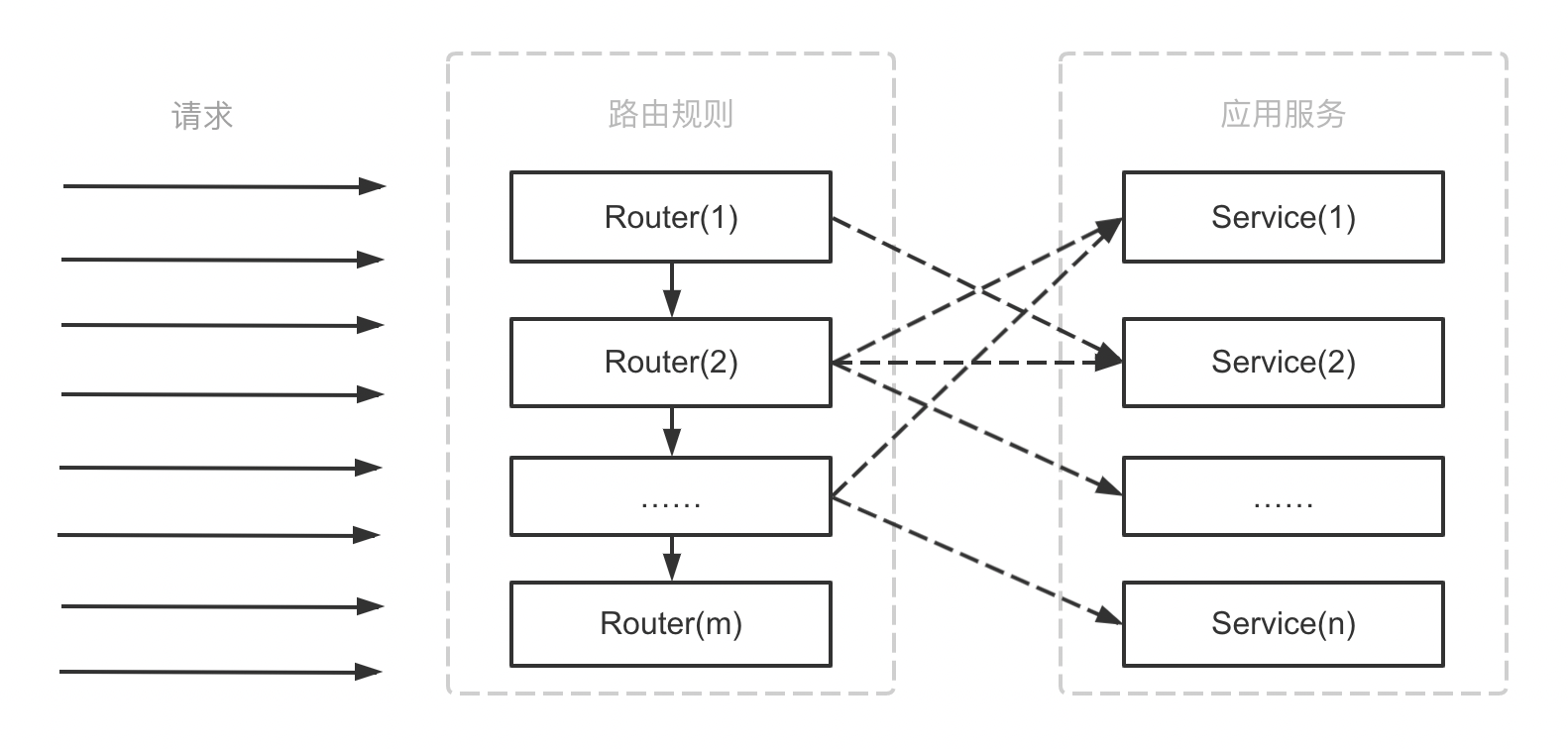Traffic Governance Rules
Traffic Management
The essence of traffic management is to distribute requests to application services according to established routing rules, as shown in the following figure:

in:
- There can be multiple routing rules, and different routing rules have priorities. Such as: Router(1) -> Router(2) -> … -> Router(n)
- A routing rule can route to multiple different application services. For example: Router(2) can route to Service(1) or Service(2)
- Multiple different routing rules can route to the same application service. For example: both Router(1) and Router(2) can route to Service(2)
- Routing rules can also not route to any application service. For example: Router(m) is not routed to any Service, all requests hitting Router(m) will cause errors because there is no corresponding application service processing
- Application service can be a single instance or an application cluster.
Dubbo Mesh format traffic management introduction
Dubbo provides a traffic management strategy that supports the mesh method, which can easily implement A/B testing, [canary release](./mesh-style/canary -deployment/), blue-green deployment and other capabilities.
Dubbo divides the entire traffic management into two parts: VirtualService and DestinationRule. When Consumer receives a request, it will follow DubboRoute and [DubboRouteDetail](./mesh- style/virtualservice/#dubboroutedetail) is matched to the corresponding subnet in DubboDestination, and finally according to the configuration in DestinationRule The labels in subnet information find the corresponding Provider cluster that needs specific routing. in:
- VirtualService mainly deals with rules for inbound traffic diversion, and supports service-level and method-level diversion.
- DubboRoute mainly solves the problem of service level shunting. At the same time, it also provides retry mechanism, timeout, fault injection, mirroring traffic and other capabilities.
- DubboRouteDetail mainly solves the method-level shunt problem in a service. Supports shunting capabilities in various dimensions such as method name, method parameters, number of parameters, parameter types, headers, etc. At the same time, it also supports method-level retry mechanism, timeout, fault injection, mirroring traffic and other capabilities.
- DubboDestination is used to describe the destination address of routing traffic, and supports host, port, subnet and other methods.
- DestinationRule mainly deals with destination address rules, which can be associated with Provider clusters through hosts, subnet, etc. At the same time, load balancing can be achieved through trafficPolicy.
This design concept solves the coupling problem between traffic diversion and destination address very well. Not only simplifies the configuration rules to effectively avoid the problem of configuration redundancy, but also supports any combination of VirtualService and DestinationRule, It can flexibly support various business usage scenarios.
